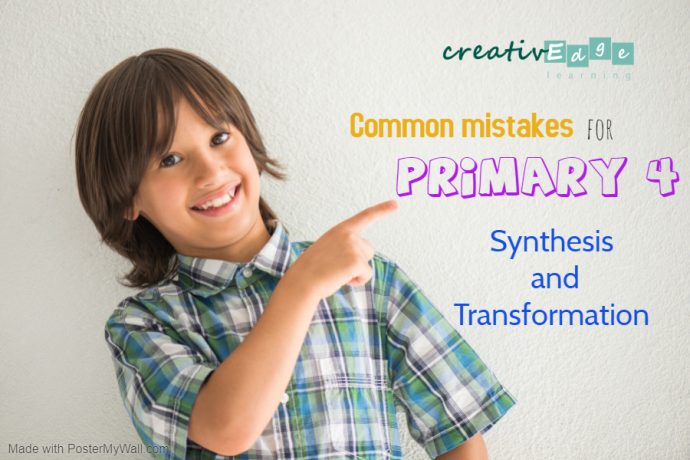
An introduction to Primary 4 Synthesis and Transformation
The questions for synthesis and transformation at the Primary 4 level commonly test the following :
- Conjunctions such as “Neither…nor”, “Either…or” , “before” and “after”.
- Present perfect tense
- Relative clauses using relative pronouns such as “whose”, “where”, “which”
- Conditional words such as “unless”, “if”
Primary 4 pupils generally make some common mistakes when attempting the above types of questions for synthesis and transformation.
In this post, we will list 5 common mistakes made as well as the steps to reach the correct answers.
Common mistake 1
Thinking that the conjunction “as well as” does not have the same meaning as “and”.
Let’s take the following question as an example:
Sample question 1
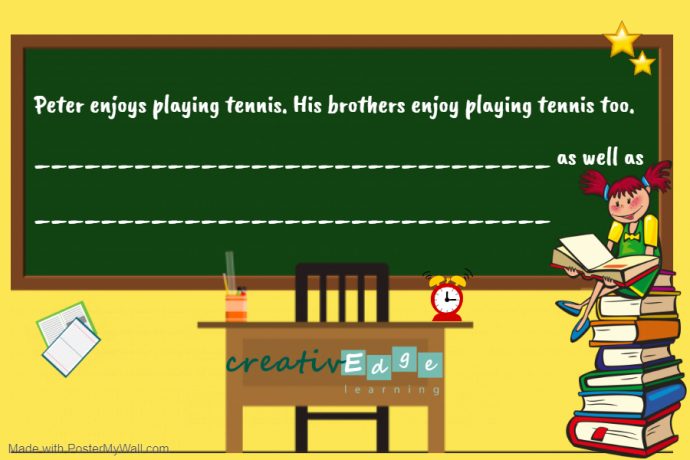
It is common that pupils assume that the sentence emphasizes on both Peter and his brothers.
As such, they will write the following incorrect answer:
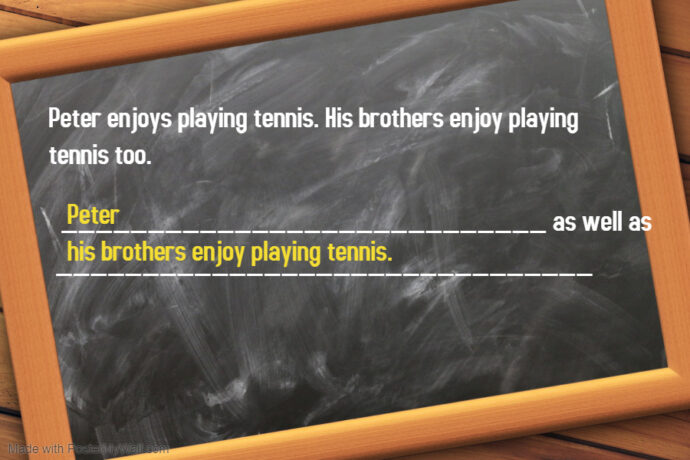
The conjunction “as well as” is not a synonym for “and”. For this example, the sentence means that Peter, in addition to his brothers (with the main emphasis being Peter.
Coming back to the example, this means that :
- the correct keyword should be “Peter”.
- the keyword then controls the verb. Since “Peter” is a singular person, the verb should be a singular one too.
The correct answer should be:
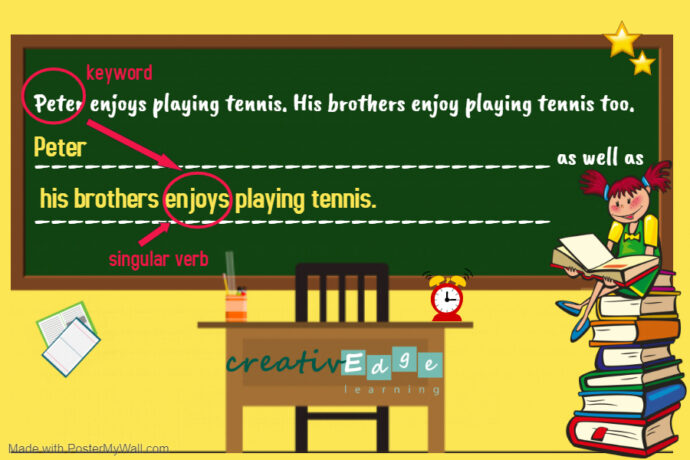
Common mistake 2
Forgetting to change the singular verb when doing “Both” questions.
Let’s take the following question as an example:
Sample question 2

It is common that pupils focus on the verb “is” which appears in both sentences and carelessly assume the answer will have the same singular verb.
As such, they will write the following incorrect answer:

Pupils should note that the word “Both” is commonly used with “and” as linking expression . This means it links two things together, making the sentence a plural expression.
Coming back to the example, this means that :
- In this case, Max and Max’s best friend are being linked together. The correct keywords should be Max and Max’s best friend.
- The keyword will then control the verb. Since “Max” and “Max’s best friend” refers to two persons, the verb should be plural.
- Nouns which are repeated in the question should not be repeated in the answer. In this case, the name “Max” should only be written once.
- the keyword will then control the verb. Since “Max” and “Max’s best friend” refers to two persons, the verb should be plural.
- Pupils should note
The correct answer is:
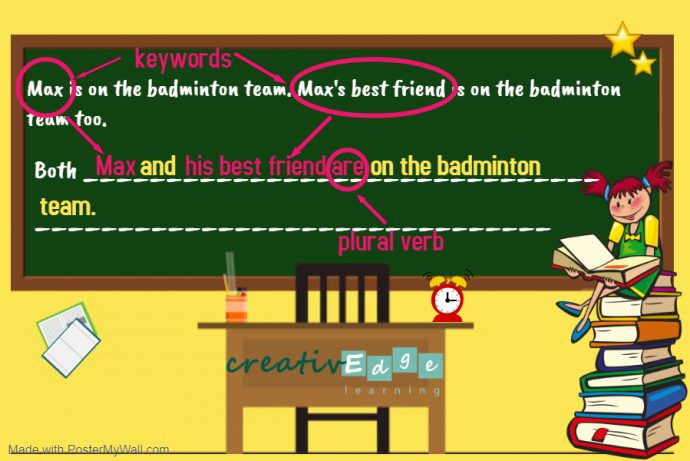
Common mistake 3
Not using the present perfect tense to show an event that started in the past and continuing in the present
Let’s take the following question as an example:
Sample question 3
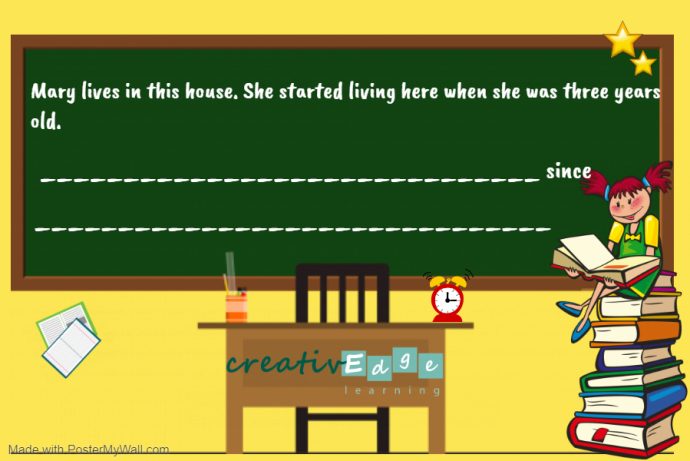
It is common that pupils focus on the verb “started” and carelessly assume that the answer should be in the past tense.
As such, they will write the following incorrect answer:
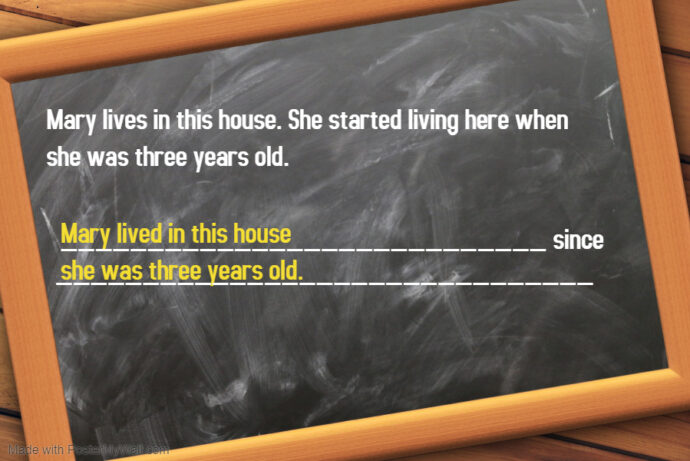
It is important to note that for this question, there are two tenses present. The first sentence is in the present tense while the second sentence is in the past tense.
The answer must fully reflect the change of tenses.
Coming back to the example, this means that :
- In this case, the correct keywords should be “lives” and “started living here”. This means Mary started living in this house from the past when she was three years old till now.
- The keywords then control the verb. Since it is an action that started in the past and still continuing in the present,the present perfect tense of the verb should be used.
The correct answer should be:

Common mistake 4
Changing the meaning of the sentence by removing necessary modal verbs.
Sample question 4

It is common that pupils combine the two sentences by changing certain words which sounds correct to them.
As such, they will write the following incorrect answer:
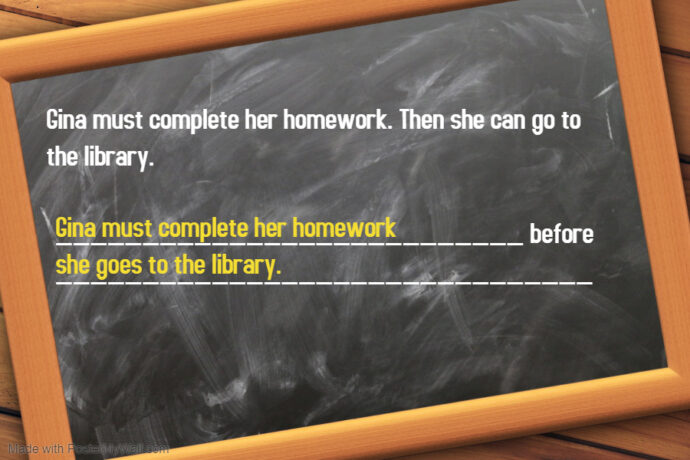
Pupils should note that modal verbs like “can” , “must” and “should” express very specific meanings.
Coming back to the example, this means that :
- The keyword should be “can”. It is a modal verb used to give permission so it should not be excluded from the answer.
- The keyword controls the sentence structure.
- Besides including the necessary words, pupils should take care to exclude the unnecessary words too. For this example, the unnecessary word is “then”.
The correct answer should be:
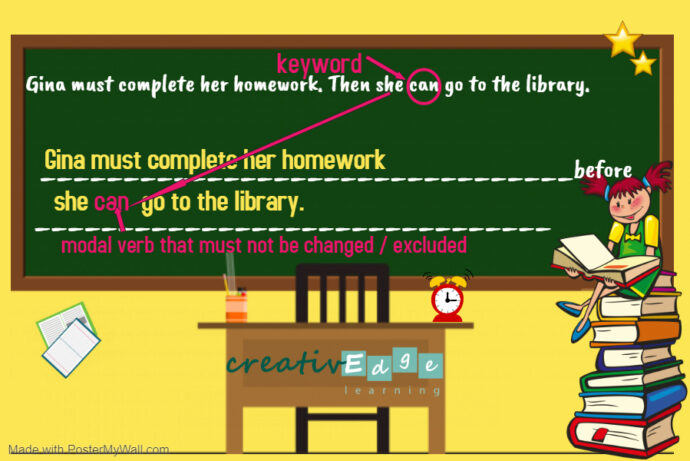
Common mistake 5
Incorrect arranging of extra information for relative clauses
Sample question 5
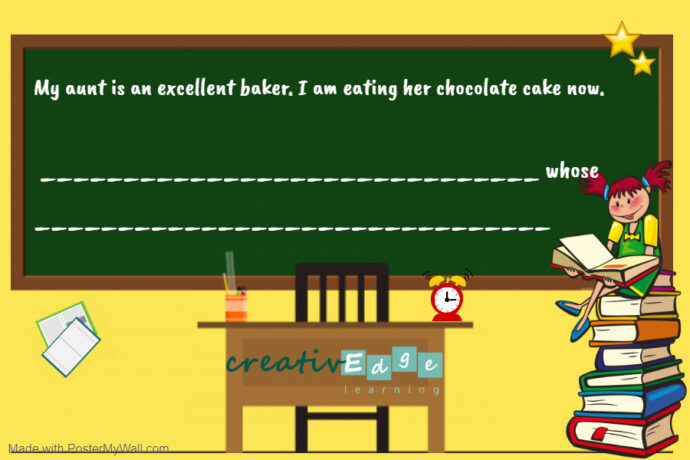
It is common that pupils write the following incorrect answer:
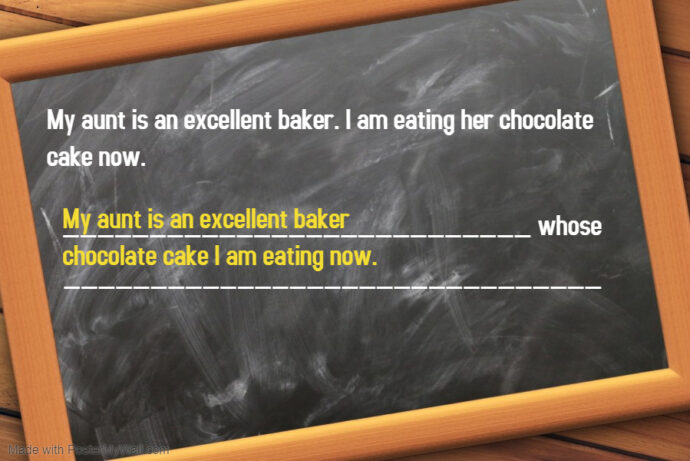
Pupils should note that when used as a relative clause, the relative pronoun “whose” indicates possession by people, animals and things. This means that :
- The keywords should be “My aunt” and “her chocolate cake”. This means that the chocolate cake belongs to my aunt.
- the keywords will then control the sentence structure.
The following steps can be used to write the answer:
- Begin the answer using the keywords
- Then insert the related verb
- Lastly, to end with the remaining parts of the main sentence
Such a relative clause (whose chocolate cake I am eating now) adds additional information to a sentence. If removed, the sentence (My aunt is an excellent baker) will still make sense.
The correct answer is:
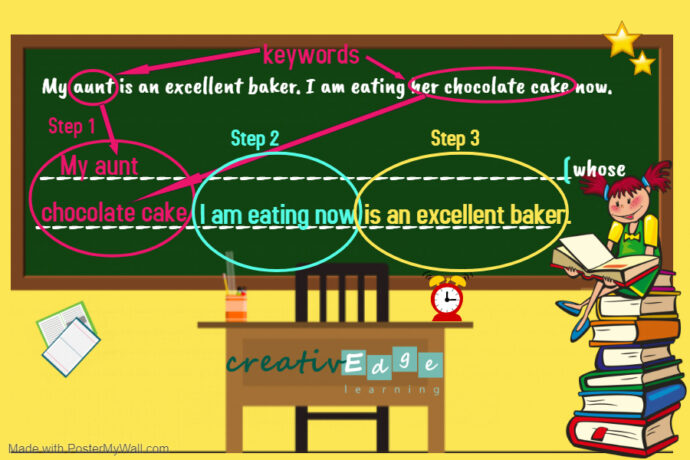
Contact us today to find out about our Primary 4 English class provides thorough instruction on Synthesis and Transformation rules and exam tips.



